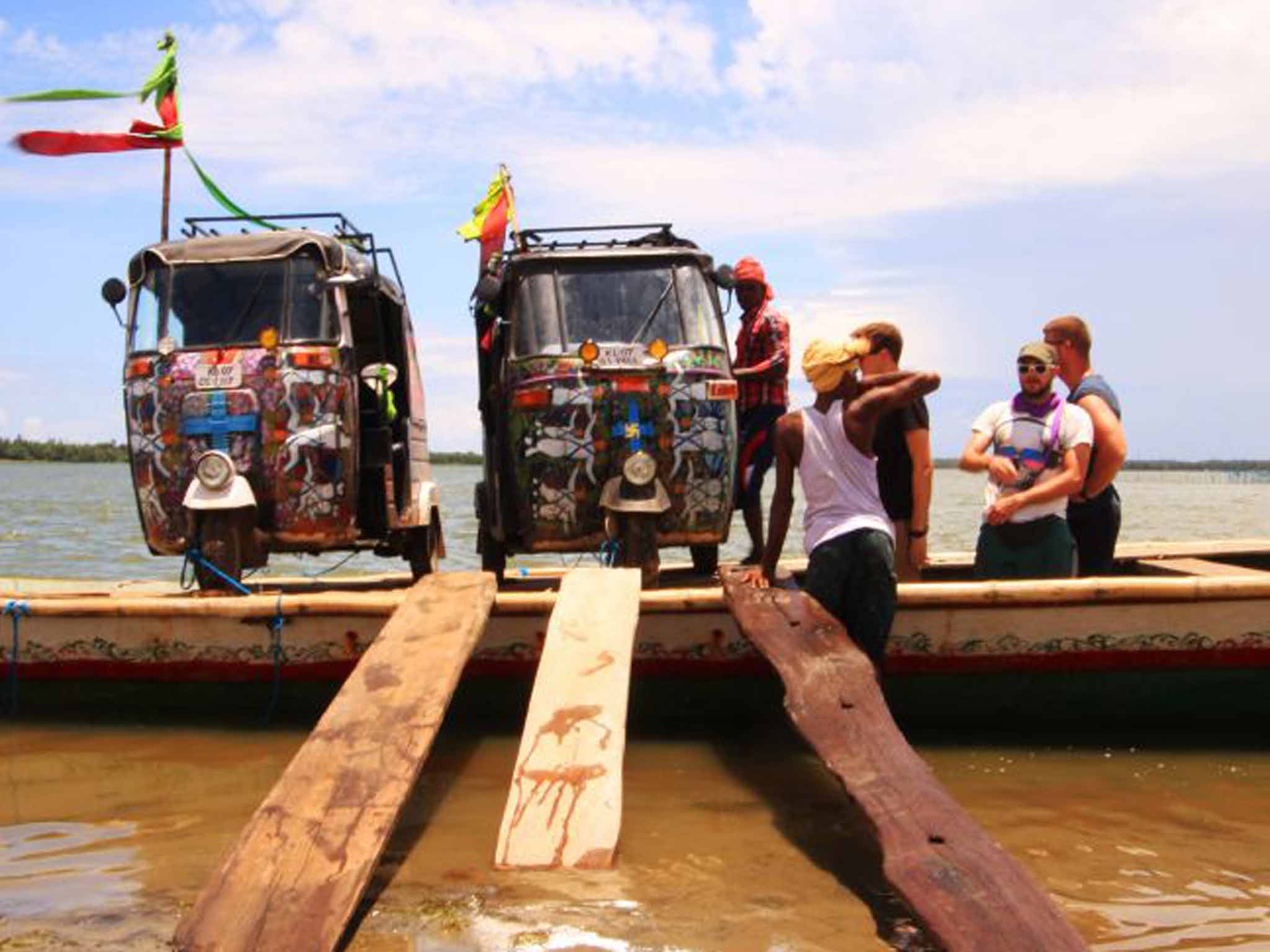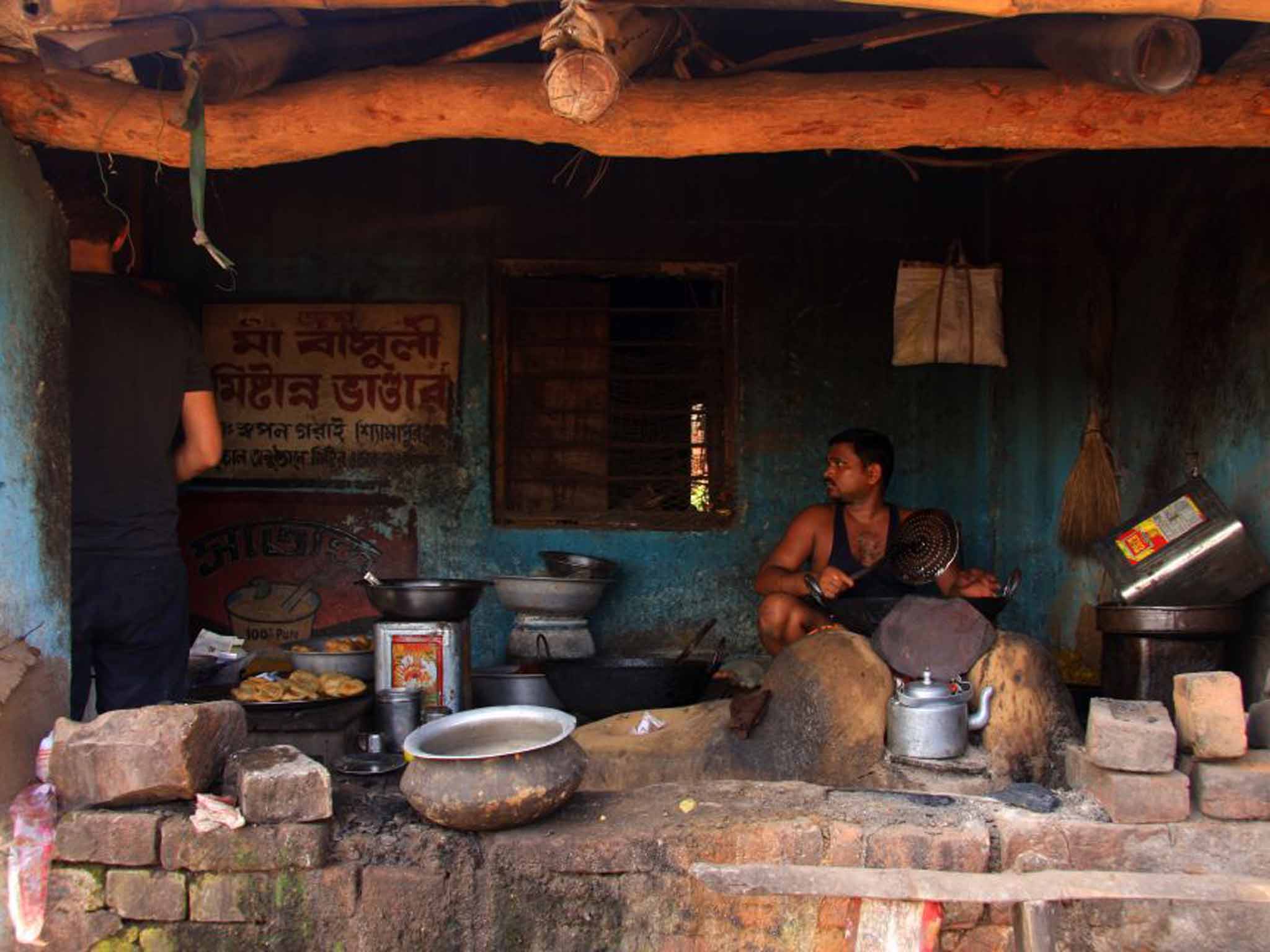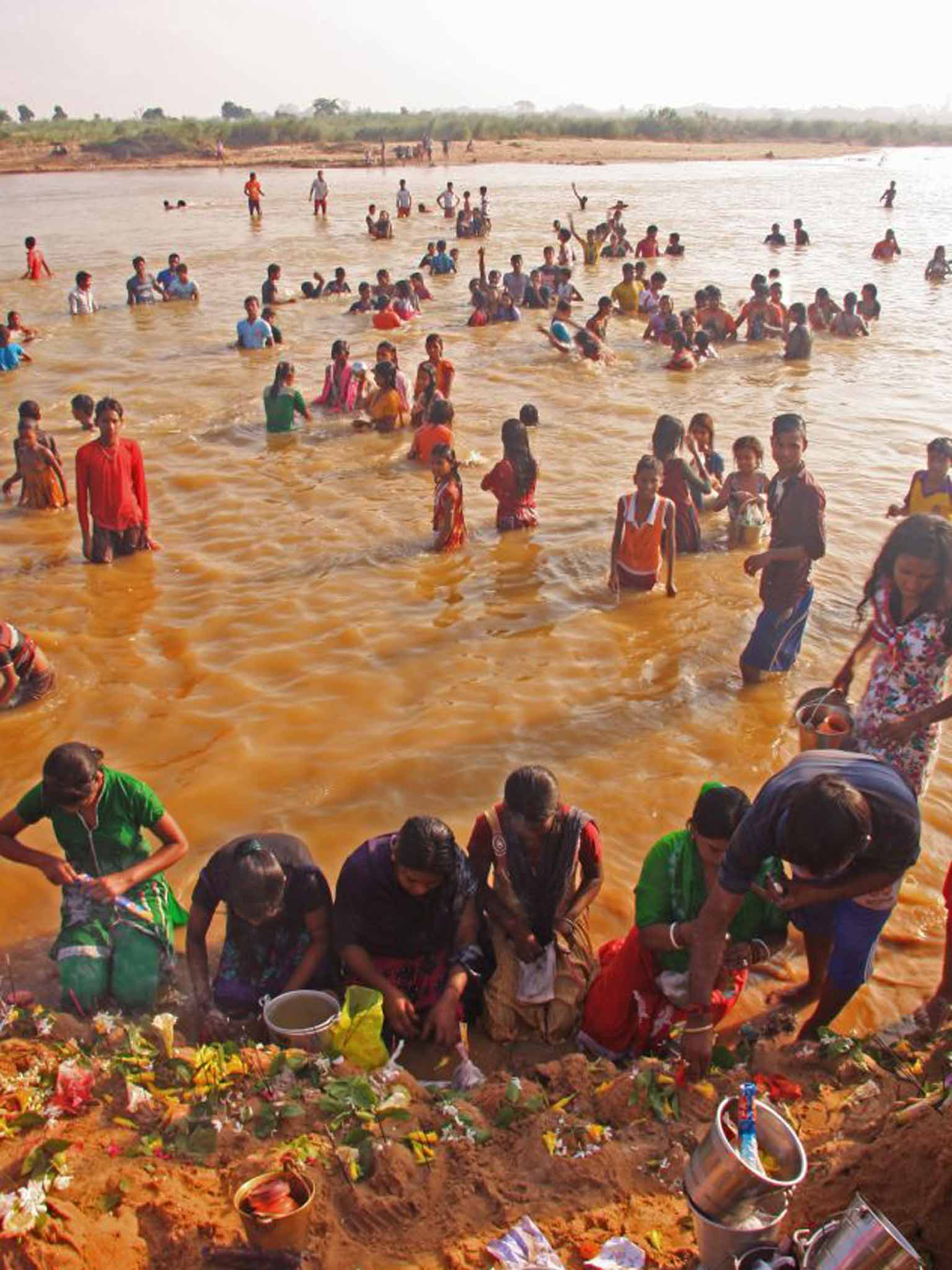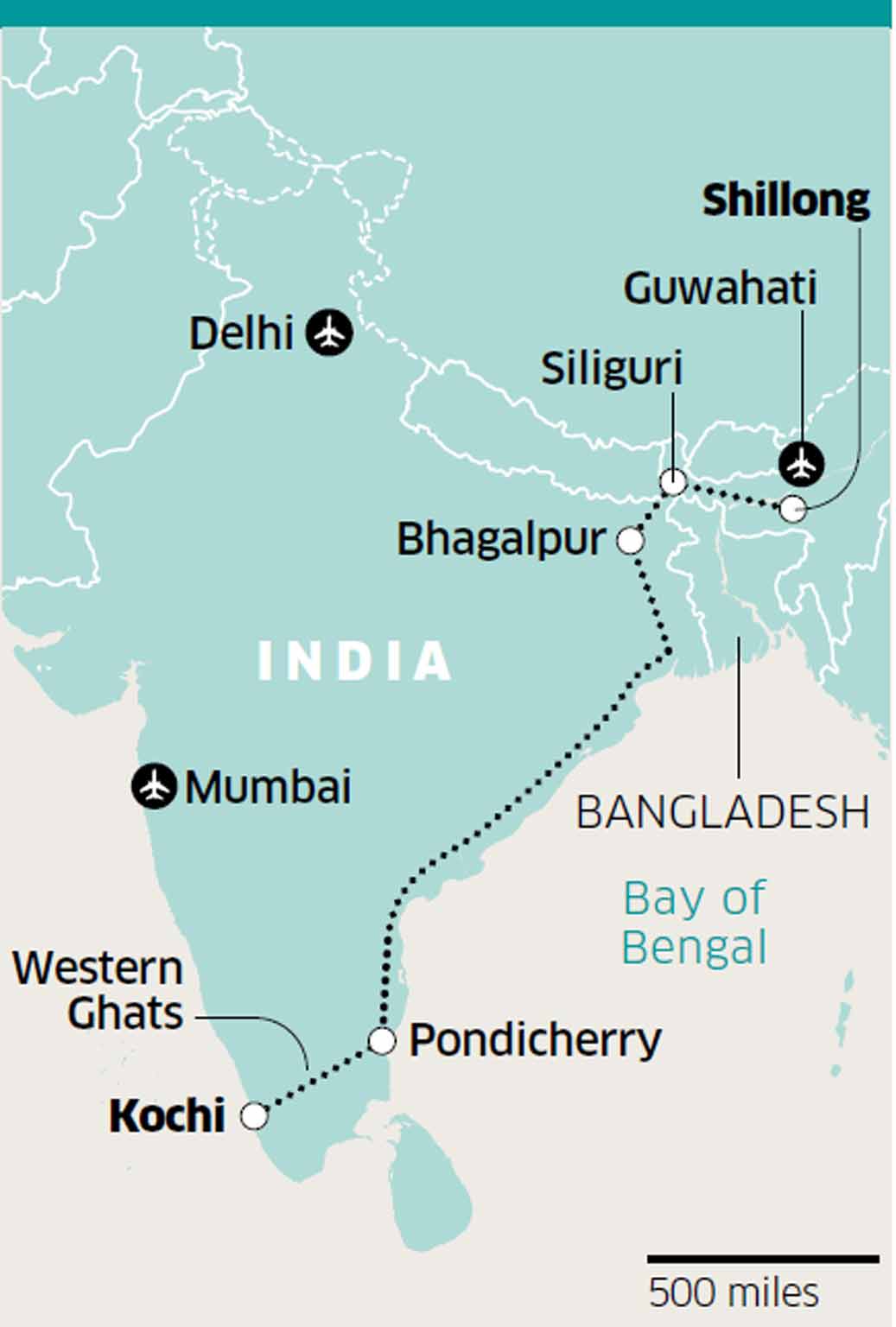India by rickshaw: A wacky race from the peaks to the beach
With two three-wheel rickshaws and four of his friends, Simon Parker set off on a 2,500 mile adventure

Your support helps us to tell the story
From reproductive rights to climate change to Big Tech, The Independent is on the ground when the story is developing. Whether it's investigating the financials of Elon Musk's pro-Trump PAC or producing our latest documentary, 'The A Word', which shines a light on the American women fighting for reproductive rights, we know how important it is to parse out the facts from the messaging.
At such a critical moment in US history, we need reporters on the ground. Your donation allows us to keep sending journalists to speak to both sides of the story.
The Independent is trusted by Americans across the entire political spectrum. And unlike many other quality news outlets, we choose not to lock Americans out of our reporting and analysis with paywalls. We believe quality journalism should be available to everyone, paid for by those who can afford it.
Your support makes all the difference.Staring vacantly at the motionless engine of our 70cc, three-wheeled auto-rickshaw as mopeds whizzed past and water buffalo sauntered by, it quickly dawned on us that we knew absolutely nothing about mechanics. A huge downpour stirred above us, while red clay- infused water from the surrounding mountains washed over our feet. Just an hour into a two-week, 2,500-mile pan-Indian journey, from Shillong in the north-eastern state of Assam to Kochi in Kerala in the south-west, our five-man convoy was in a tight spot. “Is that a spark plug?” said Jack, one of my companions, as we scratched our sweaty foreheads. “Let’s take it out and put it back in; see if that helps.” It didn’t.
After an hour of prodding and twisting levers, nuts and bolts, a benevolent rickshaw taxi driver stopped to offer us a hand as his half a dozen passengers, squeezed into the back of his identical 50 inch wide, 60 inch high, 100 inch long vehicle, watched on. “There is a common problem with rickshaws,” he reassured us, as he fashioned a small, pencil-sized reed from the roadside into a dipstick and jabbed it into our fuel tank. “You’ve run out of petrol,” he told us with a smirk. “I’ll syphon you a litre from mine.” With our pride dented and our clothes sodden with oil and rain, we set off once again. Kerala seemed an awfully long way.
For hundreds of miles, we pushed on through rice paddies, sugar cane and tea plantations, stopping for impromptu games of roadside cricket and posing for selfies at the request of bemused but enthusiastic locals. “We are driving across India in just two weeks,” I explained to the reporter of a regional newspaper as his cameraman hurriedly snapped us checking into a guesthouse, in the north-eastern town of Bhagalpur on the banks of the Ganges. We felt like celebrities, albeit grimy ones covered in petrol, dust and two-stroke oil.
It was also quickly dawning on us that driving through India in a tiny, open-sided vehicle was not only breathtaking but also perilous. India’s potholed highways are a long way from British B-roads.

All of a sudden we’d encounter huge herds of cows grazing on the central reservation of a road twice as busy as the M25 at rush hour. Weaving in and out of cars, lorries, goats, mopeds, cyclists, bulldozers, sheep, pilgrims and pedestrians became a normal occurrence. It felt like a supercharged version of the DVLA’s Hazard Perception Test.
The Rickshaw Run is a creation of The Adventurists – which also organises the Mongol Rally across Europe and Asia – and departs three times a year. After a day’s training and a brief explanation of how the rickshaw functions (in essence, a two-stroke, three-wheeled geared motorbike with a waterproof hood) the mission was simple; make it to Kochi in roughly two weeks for a celebratory party.
It is something akin to a grueling multi-day hike or a sailing adventure that combines moments of pain and frustration with those of immense and overwhelming joy. It is not intended as a race, but rather a three-wheeled means of facilitating an adventure that has no predefined narrative other that a start and end point. A cross-section of age groups set off from the start line, from gap year students to retirees.
All entrants need to take part is a driving licence and an international driving permit (£5.50 from some Post Offices). My companions and I would traverse nine states on our way from the cool highlands of Assam to the beaches of Kerala, battling engine breakdowns, bouts of diarrhoea and exhaustion. At times the experience was taxing and felt rushed, but at others it felt like we were seeing a side of India that no guidebook could accurately depict.
In West Bengal, as we approached the town of Siliguri, we screeched to a halt as hundreds of muscular buffalo were being herded across a deep and stagnating lake. The afternoon sun seared our skin as the livestock glided under the water’s surface, enjoying a brief respite from the swarms of midges now directing their attention towards us. “We do this every day to cool them down,” one of the farmers explained as he reached for a camera phone in his pocket. “We will now move them to a new field, but first, can I have a selfie?”
With more than 2,000 miles left to cover as we skirted around India’s border with Bangladesh, we knew we had to eat up miles and push on south, following the Bay of Bengal; the largest bay in the world. Driving south into the state of Odisha we passed hundreds of Hindu temples and temples. The mosques we had encountered to the north were dissipating and the mercury was rising. As the first rays of dawn cracked over India’s eastern horizon, we waved at children on their way to school, dressed in pristine uniforms as rowdy macaques sprang to life between the overhanging branches of roadside fig trees.

We were following the curvature of the west coast with the aim of reaching the French colonial settlement of Pondicherry in Tamil Nadu, before switching west to Kerala on the east coast. A lack of mobile signal and knowledge of Hindi meant that we were navigating solely with a pocket Indian atlas and hand gestures. We decided on a destination to reach each day and then rewarded ourselves with cold beers and hot curries when we finally arrived, whatever the hour; before checking into small guesthouses for the equivalent of a few pounds per head.
Restarting our journey each day before sunrise meant that we could get a head start on the unpredictable roads, before the rest of the country woke up. Intermittent breakdowns meant that we were forced to make unscheduled but often insightful pit stops in remote towns and villages. In Tamil Nadu we spluttered to a halt as one of our engines coughed and groaned from the pressures of unrelenting motorway driving.
“You must come and see our school,” said a man as we scoffed naan breads and onion pakoras. “The children would love to have their picture taken with you.” By the time our engine was fixed we had posed for dozens of photos with teachers and parents, played ball games in the playground and shaken what felt like hundreds of tiny hands.
With the finish line in our sights we knew that sticking to highways would be tedious but effective – and give us precious time to relax in the evenings in the Western Ghats; a mountainous Unesco World Heritage Site renowned for its biodiversity. In the final three days we managed to clock up 900 miles at an average speed of just 35mph, on wheels the size of large frozen pizzas.

As we crossed the border into Kerala, the last of our nine Indian states, a sultry breeze blew through the rickshaw as coffee shops, peddling southern India’s most plentiful crop, teased our caffeine-deprived taste buds. With just a couple of hundred miles left on our journey we were cruising through verdant nature reserves, savouring the solitude of our surroundings and the magnitude of our journey. As I stared out from the back seat of the rickshaw, elephants and buffalo drank from a distant lake while butterflies and praying mantises skipped past.
Arriving in Kochi 16 days and 176 hours’ driving time after we set off felt like the end of an epic and largely unplanned adventure. Our two rickshaws had guzzled their way through roughly 110 gallons of unleaded petrol and 10 gallons of two-stroke at an average speed of just 14mph.
We’d also driven past 24 dead dogs, witnessed the aftermath of a fatal human collision, and come to within inches of real danger on at least half a dozen occasions. By embracing the unexpected, we had learnt to appreciate the thrill of the unknown. We were filthy, exhausted and desperate for a cold shower, but with a crowd of intrigued onlookers gathering at the finish line, we savoured the opportunity for a few more selfies.
Getting there
A multi-city ticket with Jet Airways (0808 101 1199; jetairways.com) from Heathrow to Guwahati via Delhi, returning from Kochi via Mumbai costs from £804pp. Flights are also available from Manchester and Birmingham via Brussels.
Driving there
The Adventurists’ Rickshaw Run takes place in January, April and August. The price is £1,595 per team of up to 3 people including insurance, test-driving and a three-wheeled auto-rickshaw with custom paint-job (0117 3643402; theadventurists.com/rickshaw-run)
More information
The Foreign Office warns, “Car and motorbike accidents are one of the biggest causes of injury and death overseas. If possible, avoid travelling at night (gov.uk/foreign-travel-advice).
Join our commenting forum
Join thought-provoking conversations, follow other Independent readers and see their replies
Comments